A Practical Model of the Application of Information Technology in Various Fields of Online Education during the COVID-19 Pandemic: Mechanical Engineering, Traffic, Informatics and Statistics, Accounting and Auditing
Abstract
1. Introduction
2. Literature Review
- The development of a practical web platform for online education based on Moodle, JavaScript language, Excel models, Google tests, and ANN.
- To stimulate student’s motivation to work harder, the ANN model was designed to provide each student with individual questions that can be completed with the least probability to raise students’ awareness about the importance of adopting the entire learning material in a balanced way.
3. Methodology
Framework
- Freshman year on the faculty;
- Year of attending subject;
- Number of points acquired on a particular lecture (pre-exam obligations);
- Number of an exam question by order.
- Percentage of points acquired for a particular exam question.
- Obtaining data instances for inputs and outputs;
- ANN architecture model selection based on a 20% sample;
- Learning ANN with 60% of randomly selected data;
- ANN testing based on remaining 20% of randomly selected data;
- Data preparation for next exam (each student has individual data that display as an input in ANN);
- Predictions of probability of correct answers for individual questions (each student individually);
- Selecting questions with the least probability of correct answer per student.
4. Results
- Period before the COVID-19 pandemic;
- Period after the COVID-19 outbreak, before introducing the ANN support system for selecting exam questions;
- Period after the COVID-19 outbreak, after introducing the ANN support system for selecting exam questions.
5. Discussion
Limitations and Future Research Directions
6. Conclusions
Author Contributions
Funding
Institutional Review Board Statement
Informed Consent Statement
Data Availability Statement
Conflicts of Interest
References
- Pokhrel, S.; Chhetri, R. A Literature Review on Impact of COVID-19 Pandemic on Teaching and Learning. High. Educ. Future 2021, 8, 133–141. [Google Scholar] [CrossRef]
- Alsariera, Y.A.; Baashar, Y.; Alkawsi, G.; Mustafa, A.; Alkahtani, A.A.; Ali, N.A. Assessment and Evaluation of Different Machine Learning Algorithms for Predicting Student Performance. Comput. Intell. Neurosci. 2022, 2022, 4151487. [Google Scholar] [CrossRef] [PubMed]
- Aydoğdu, Ş. Predicting student final performance using artificial neural networks in online learning environments. Educ. Inf. Technol. 2020, 25, 1913–1927. [Google Scholar] [CrossRef]
- Baashar, Y.; Alkawsi, G.; Mustafa, A.; Alkahtani, A.A.; Alsariera, Y.A.; Ali, A.Q.; Hashim, W.; Tiong, S.K. Toward Predicting Student’s Academic Performance Using Artificial Neural Networks (ANNs). Appl. Sci. 2022, 12, 1289. [Google Scholar] [CrossRef]
- Baylari, A.; Montazer, G.A. Design a personalized e-learning system based on item response theory and artificial neural network approach. Expert Syst. Appl. 2009, 36, 8013–8021. [Google Scholar] [CrossRef]
- Bernard, J.; Chang, T.-W.; Popescu, E.; Graf, S. Using Artificial Neural Networks to Identify Learning Styles. In Proceedings of the 17th International Conference, Artificial Intelligence in Education, AIED 2015, Madrid, Spain, 22–26 June 2015; Conati, C., Heffernan, N., Mitrovic, A., Verdejo, M., Eds.; Springer: Cham, Switzerland, 2015; pp. 541–544. [Google Scholar] [CrossRef]
- Hamadneh, N.N.; Atawneh, S.; Khan, W.A.; Almejalli, K.A.; Alhomoud, A. Using Artificial Intelligence to Predict Students’ Academic Performance in Blended Learning. Sustainability 2022, 14, 11642. [Google Scholar] [CrossRef]
- Lau, E.T.; Sun, L.; Yang, Q. Modelling, Prediction and Classification of Student Academic Performance using Artificial Neural Networks. SN Appl. Sci. 2019, 1, 982. [Google Scholar] [CrossRef]
- Özbey, M.; Kayri, M. Investigation of Factors Affecting Transactional Distance in E-Learning Environment with Artificial Neural Networks. Educ. Inf. Technol. 2022, 1–29. [Google Scholar] [CrossRef] [PubMed]
- Rivas, A.; González-Briones, A.; Hernández, G.; Prieto, J.; Chamoso, P. Artificial Neural Network Analysis of The Academic Performance of Students in Virtual Learning Environments. Neurocomputing 2021, 423, 713–720. [Google Scholar] [CrossRef]
- Chakraborty, P.; Mittal, P.; Gupta, M.S.; Yadav, S.; Arora, A. Opinion of Students on Online Education during the COVID-19 Pandemic. Hum. Behav. Emerg. Technol. 2021, 3, 357–365. [Google Scholar] [CrossRef]
- Daniel, S.J. Education and the COVID-19 pandemic. Prospects 2020, 49, 91–96. [Google Scholar] [CrossRef]
- Mishra, L.; Gupta, T.; Shree, A. Online teaching-learning in higher education during lockdown period of COVID-19 pandemic. Int. J. Educ. Res. Open 2020, 1, 100012. [Google Scholar] [CrossRef] [PubMed]
- Vlachopoulos, D. COVID-19: Threat or Opportunity for Online Education? High. Learn. Res. Commun. 2020, 10, 16–19. [Google Scholar] [CrossRef]
- Wargadinata, W.; Maimunah, I.; Dewi, E.; Rofiq, Z. Student’s Responses on Learning in the Early COVID-19 Pandemic. J. Educ. Teach. Train. 2020, 5, 141–153. [Google Scholar] [CrossRef]
- Adedoyin, O.B.; Soykan, E. COVID-19 pandemic and online learning: The challenges and opportunities. Interact. Learn. Environ. 2020, 1–13. [Google Scholar] [CrossRef]
- Asgari, S.; Trajkovic, J.; Rahmani, M.; Zhang, W.; Lo, R.C.; Sciortino, A. An observational study of engineering online education during the COVID-19 pandemic. PLoS ONE 2021, 16, e0250041. [Google Scholar] [CrossRef] [PubMed]
- Pirrone, C.; Varrasi, S.; Platania, G.A.; Castellano, S. Face-to-face and online learning: The role of technology in students’ metacognition. In Proceedings of the First Workshop on Technology Enhanced Learning Environments for Blended Education, Foggia, Italy, 21–22 January 2020. [Google Scholar]
- Sutarto, S.; Sari, D.P.; Fathurrochman, I. Teacher strategies in online learning to increase students’ interest in learning during COVID-19 pandemic. J. Konseling Dan Pendidik. 2020, 8, 129–137. [Google Scholar] [CrossRef] [PubMed]
- Harvey, A.G.; Armstrong, C.C.; Callaway, C.A.; Gumport, N.B.; Gasperetti, C.E. COVID-19 Prevention via the Science of Habit Formation. Curr. Dir. Psychol. Sci. 2021, 30, 174–180. [Google Scholar] [CrossRef]
- Lee, D.; Watson, S.L.; Watson, W.R. The Relationships Between Self-Efficacy, Task Value, and Self-Regulated Learning Strategies in Massive Open Online Courses. Int. Rev. Res. Open Distrib. Learn. 2020, 21, 23–39. [Google Scholar] [CrossRef]
- Xie, X.; Siau, K.; Nah, F.F.-H. COVID-19 pandemic–online education in the new normal and the next normal. J. Inf. Technol. Case Appl. Res. 2020, 22, 175–187. [Google Scholar] [CrossRef]
- Lemay, D.J.; Bazelais, P.; Doleck, T. Transition to online learning during the COVID-19 pandemic. Comput. Hum. Behav. Rep. 2021, 4, 100130. [Google Scholar] [CrossRef] [PubMed]
- Adnan, M.; Anwar, K. Online learning amid the COVID-19 pandemic: Students’ perspectives. J. Pedagog. Sociol. Psychol. 2020, 2, 45–51. [Google Scholar] [CrossRef]
- Pirrone, C.; Di Corrado, D.; Privitera, A.; Castellano, S.; Varrasi, S. Students’ Mathematics Anxiety at Distance and In-Person Learning Conditions during COVID-19 Pandemic: Are There Any Differences? An Exploratory Study. Educ. Sci. 2022, 12, 379. [Google Scholar] [CrossRef]
- Muthuprasad, T.; Aiswarya, S.; Aditya, K.S.; Jha, G.K. Students’ perception and preference for online education in India during COVID-19 pandemic. Soc. Sci. Humanit. Open 2021, 3, 100101. [Google Scholar] [CrossRef] [PubMed]
- Chen, T.; Peng, L.; Yin, X.; Rong, J.; Yang, J.; Cong, G. Analysis of User Satisfaction with Online Education Platforms in China during the COVID-19 Pandemic. Healthcare 2020, 8, 200. [Google Scholar] [CrossRef] [PubMed]
- Junus, K.; Santoso, H.B.; Putra, P.O.; Gandhi, A.; Siswantining, T. Lecturer Readiness for Online Classes during the Pandemic: A Survey Research. Educ. Sci. 2021, 11, 139. [Google Scholar] [CrossRef]
- Ilić, D.; Milošević, D.; Jovanović, Z.; Cvjetković, M.; Vulić, M. MLP ANN Condition Assessment Model of the Turbogenerator Shaft A6 HPP Đerdap 2. Teh. Vjesn. 2021, 28, 291–296. [Google Scholar] [CrossRef]
- Ilić, D.; Milošević, D.; Momčilović, D. Examination of the Psysical-Chemical and Mechanical Properties of Helical Cylindrical Compression Springs Preserved in the Legacy in the Nikola Tesla Museum. In Proceedings of the 1st International Conference of Mathematical Modelling in Mechanics and Engineering, Belgrade, Serbia, 8–10 September 2022. [Google Scholar]

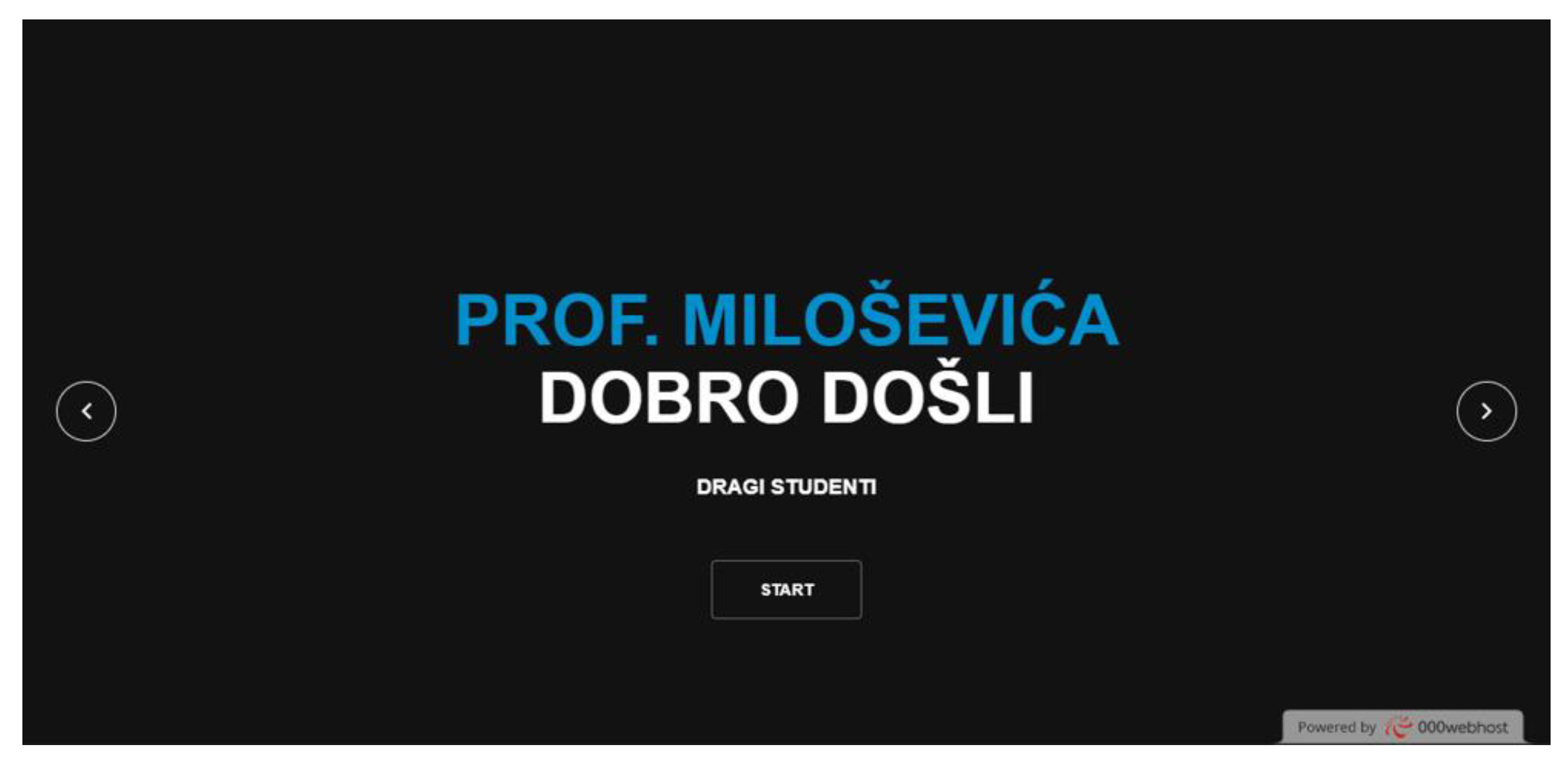
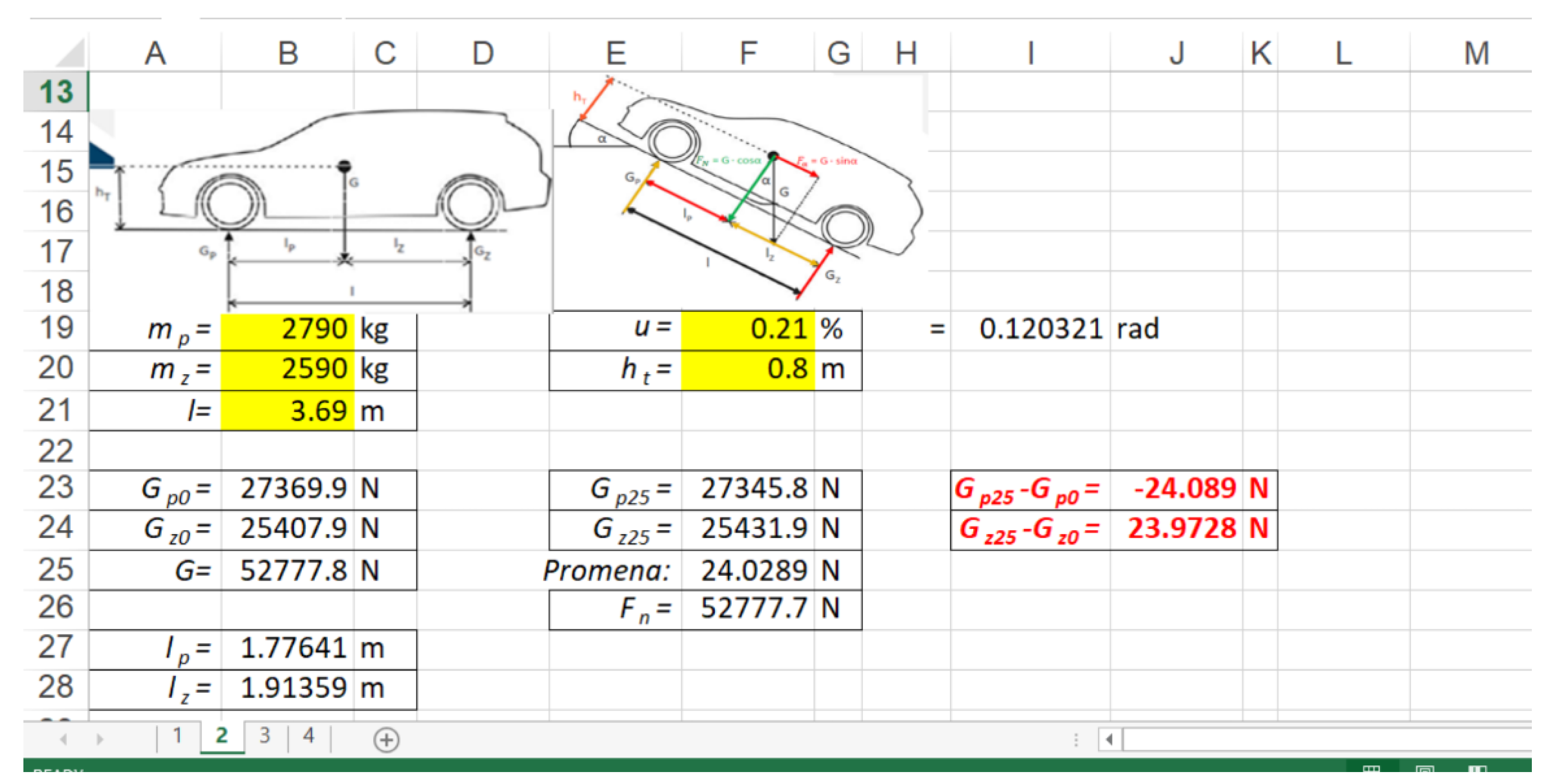
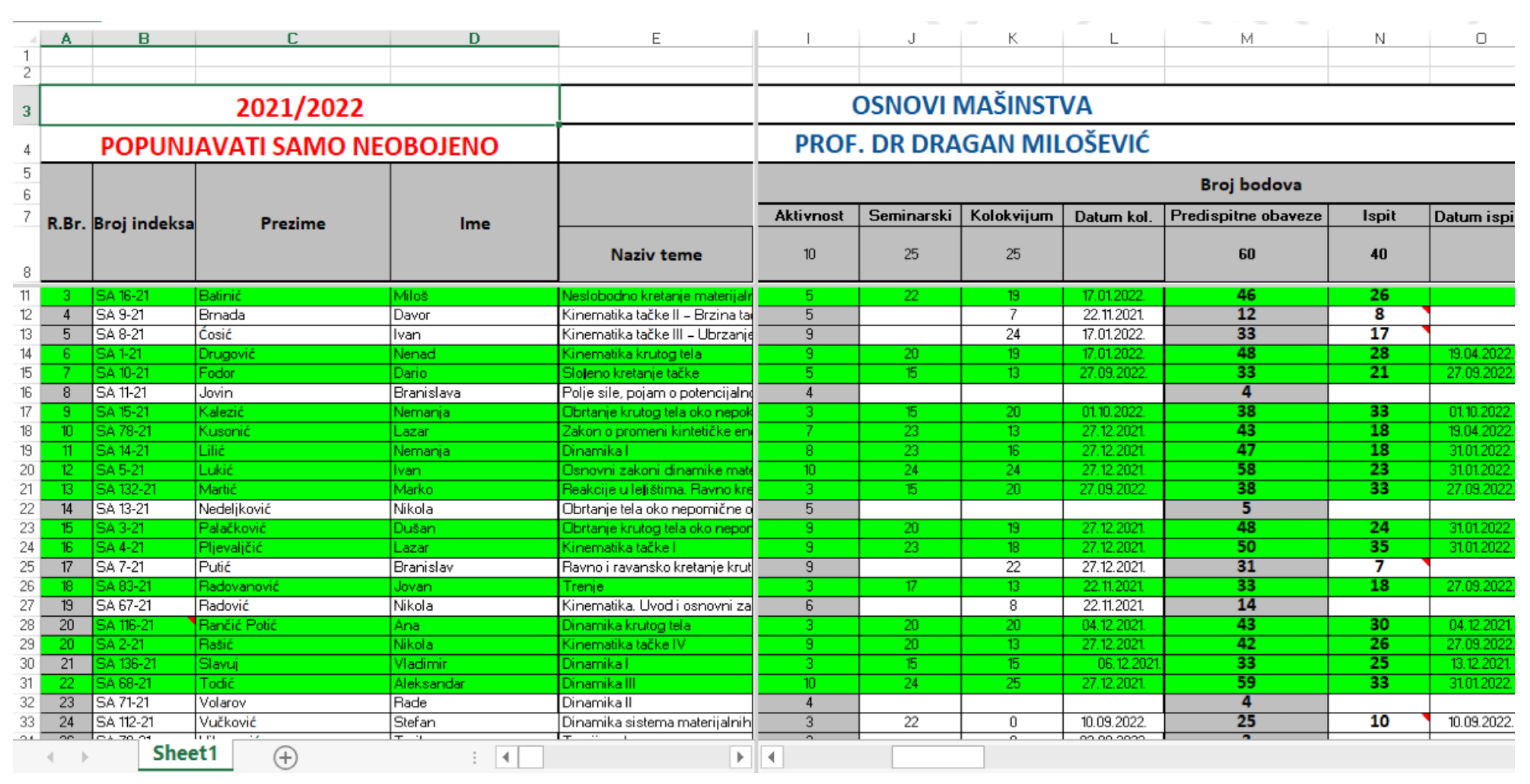
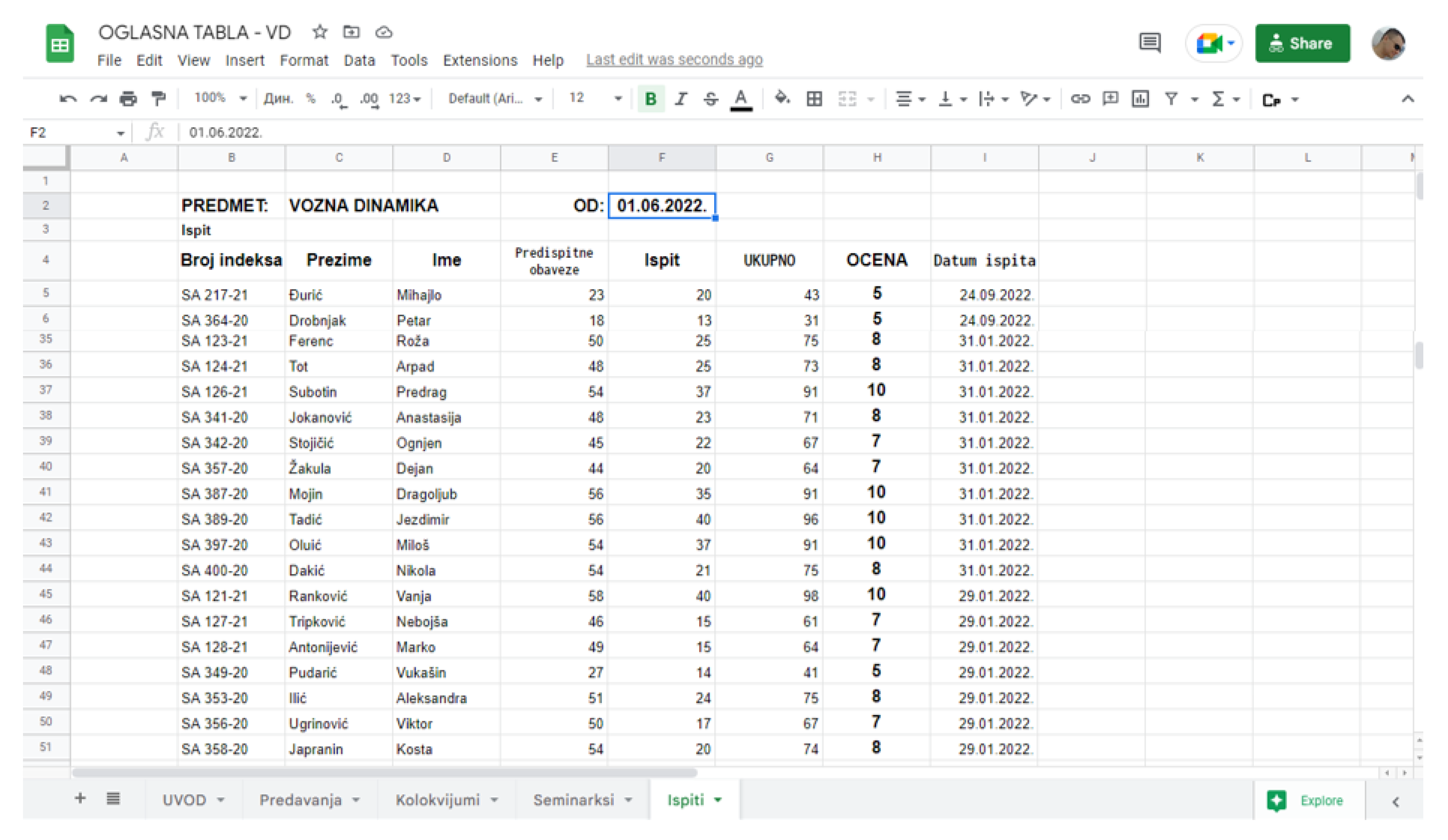
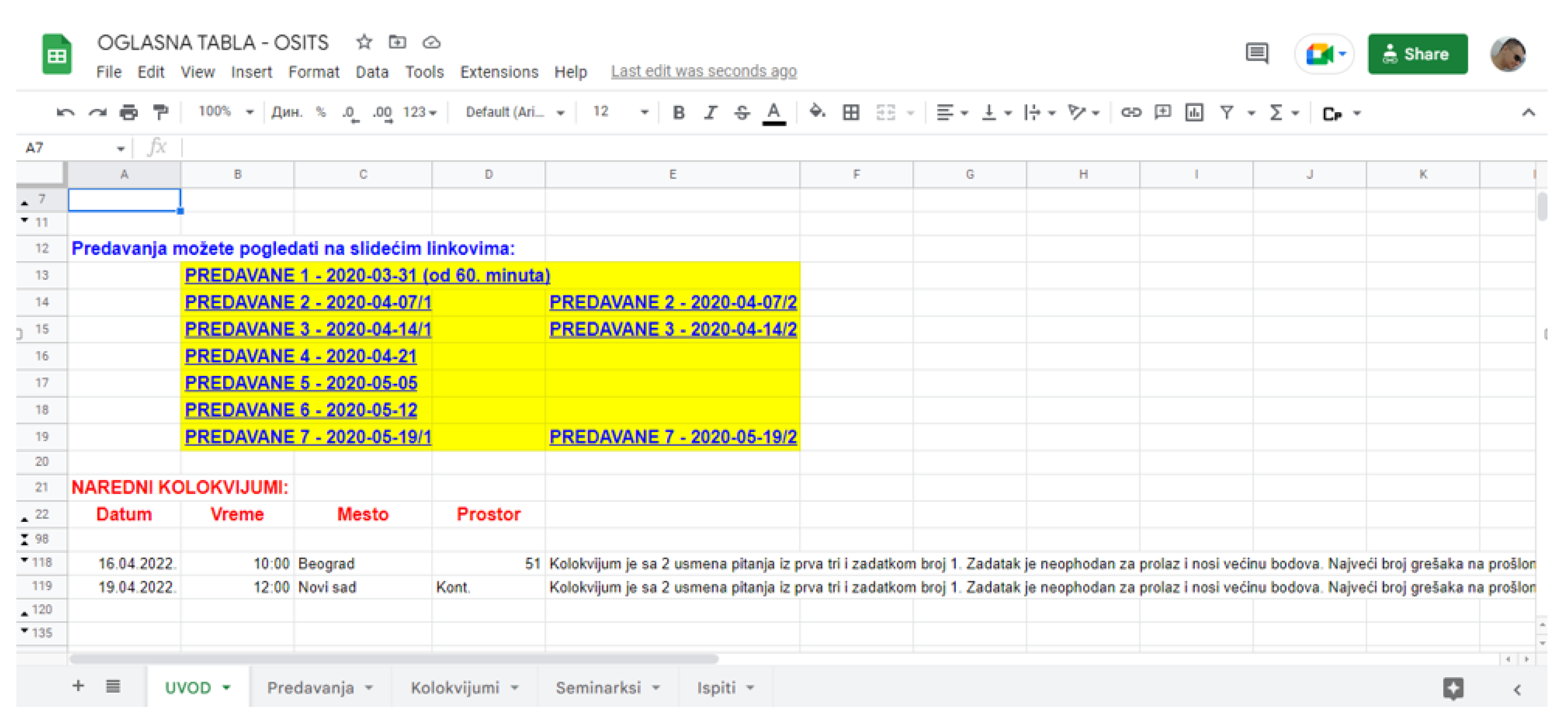
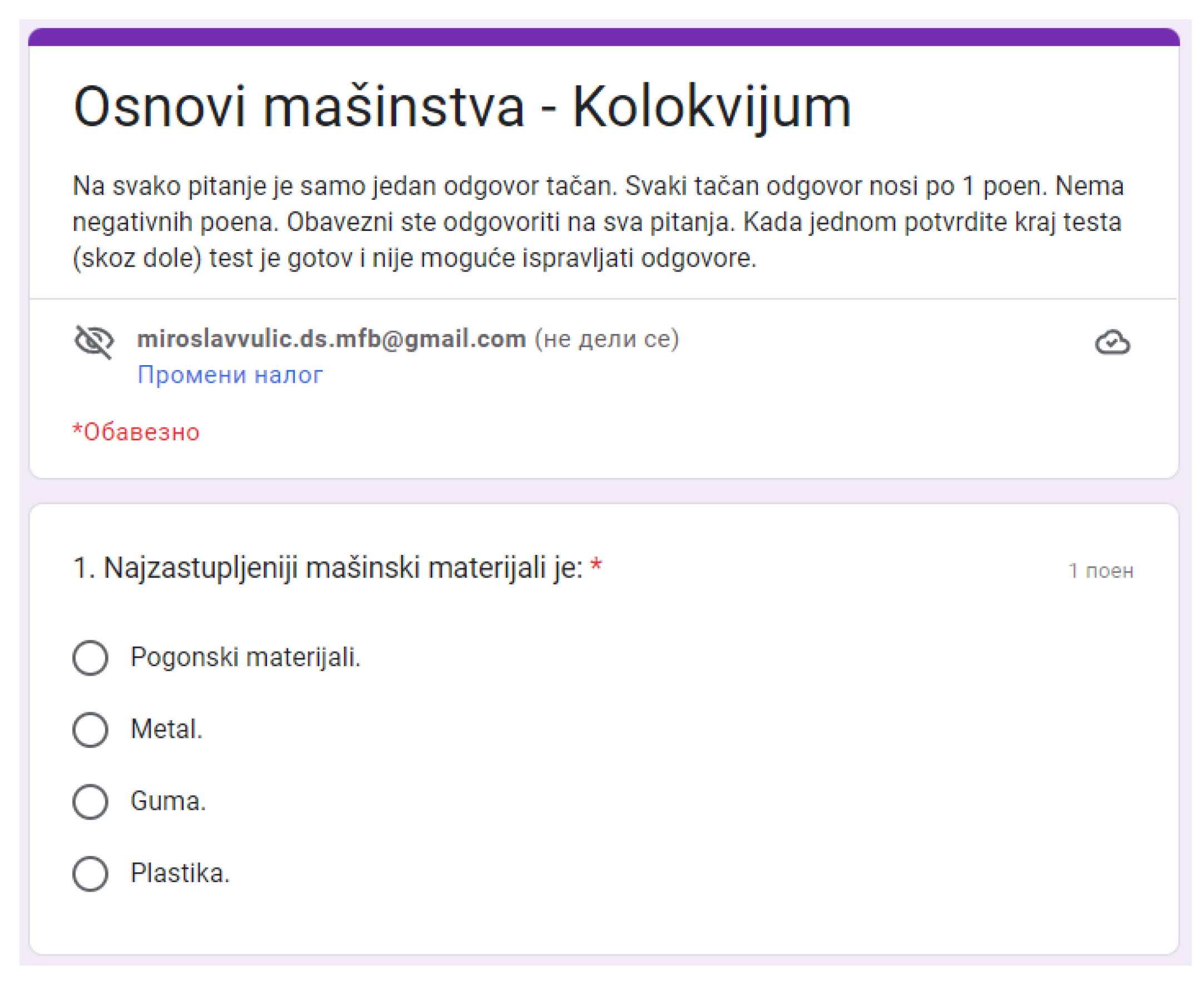

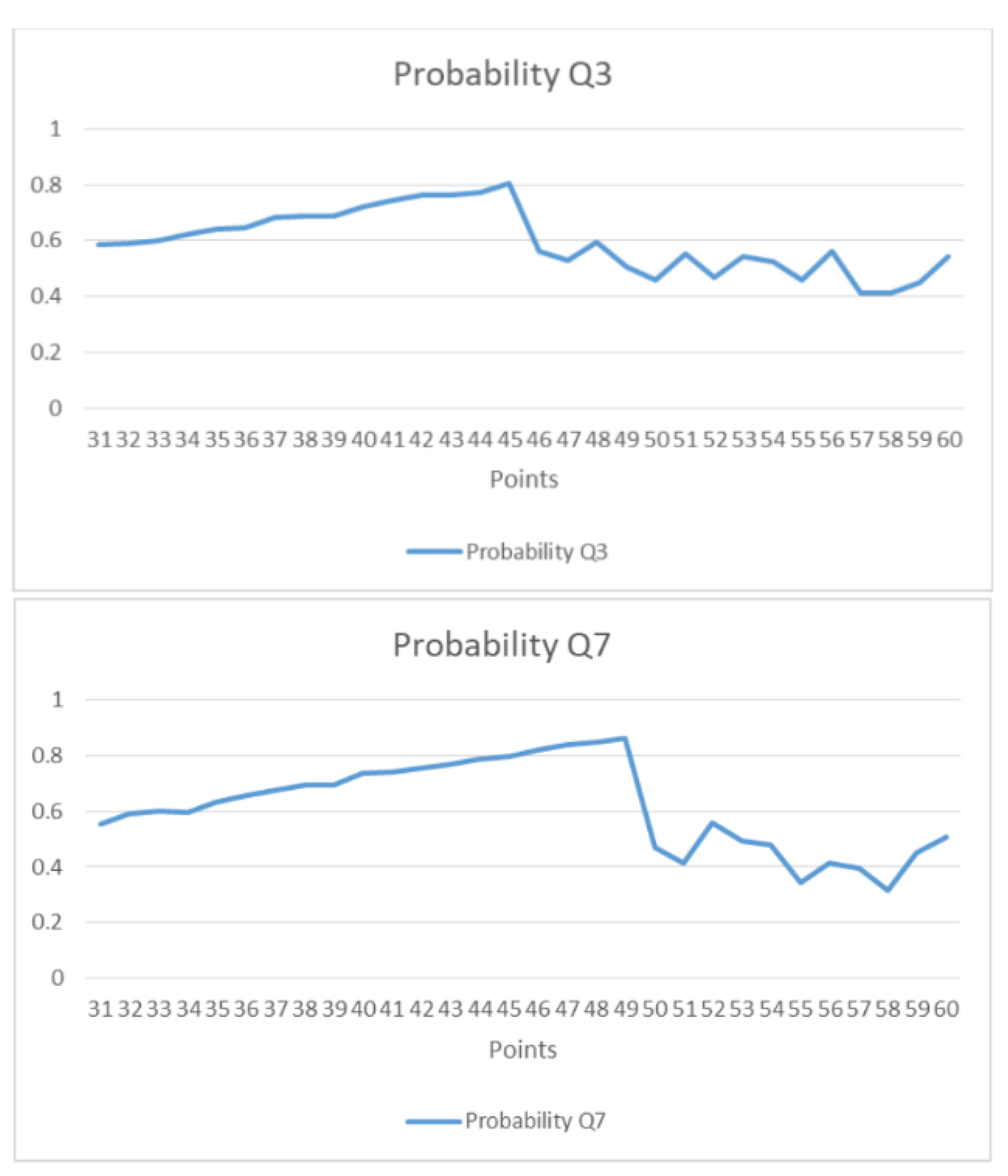
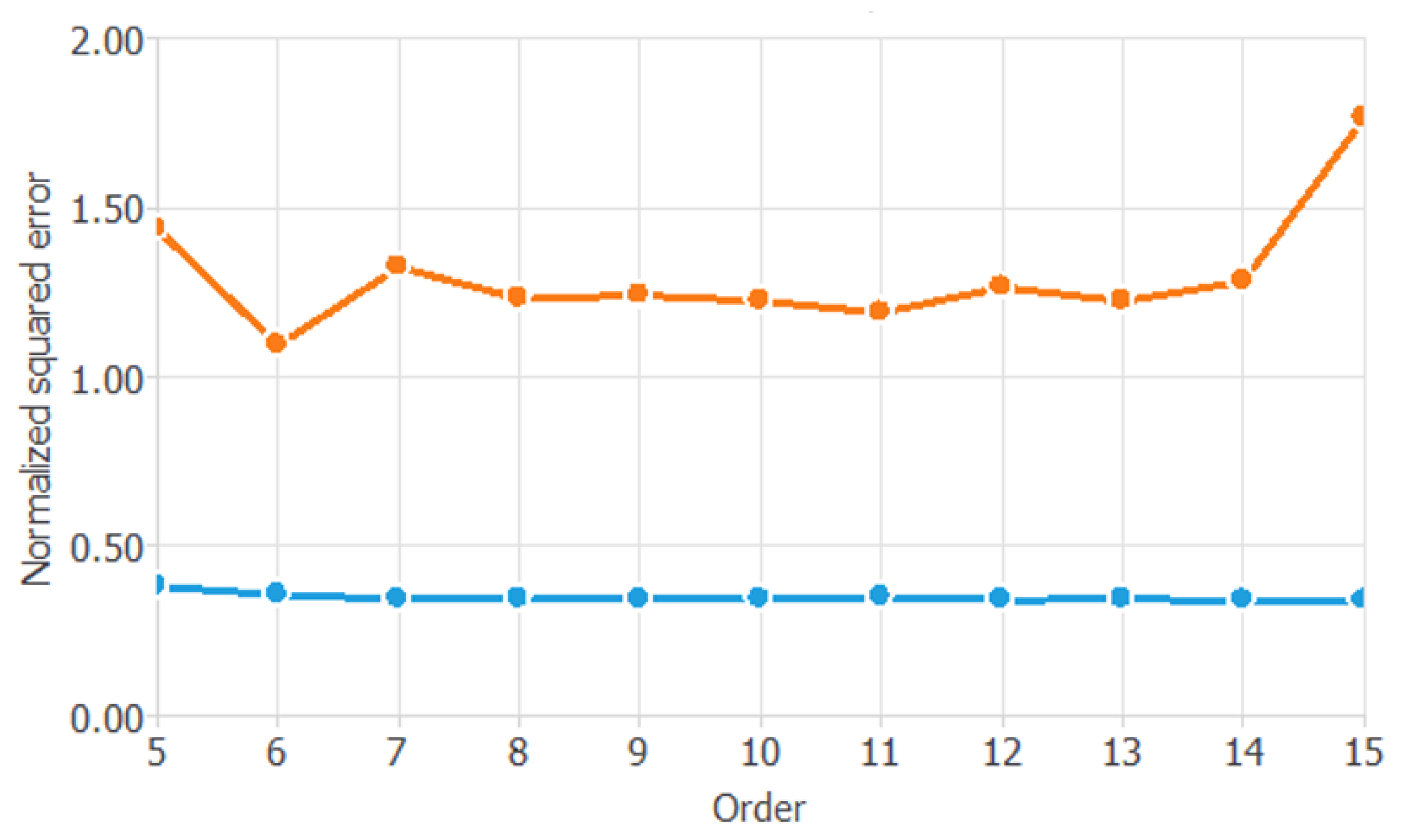
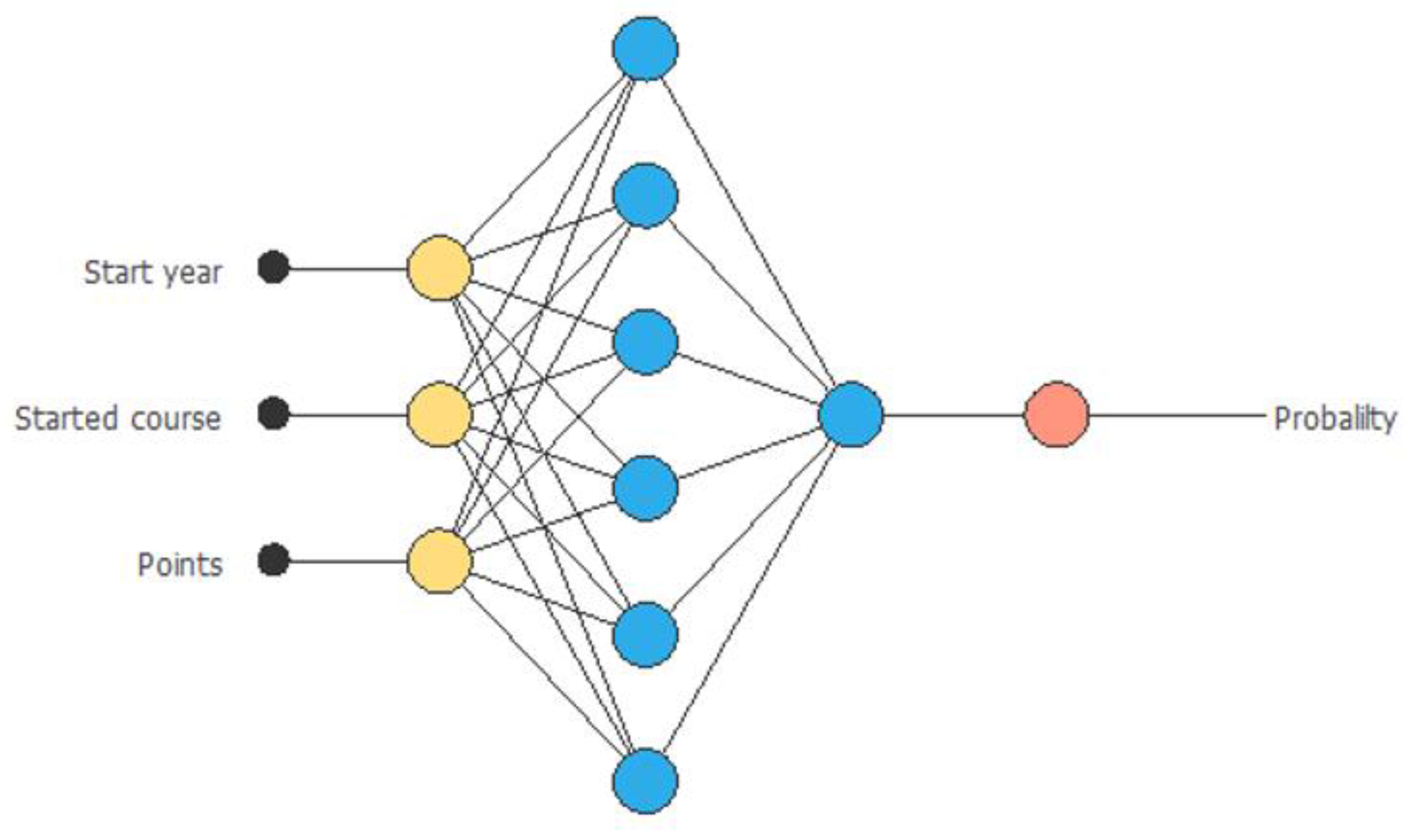
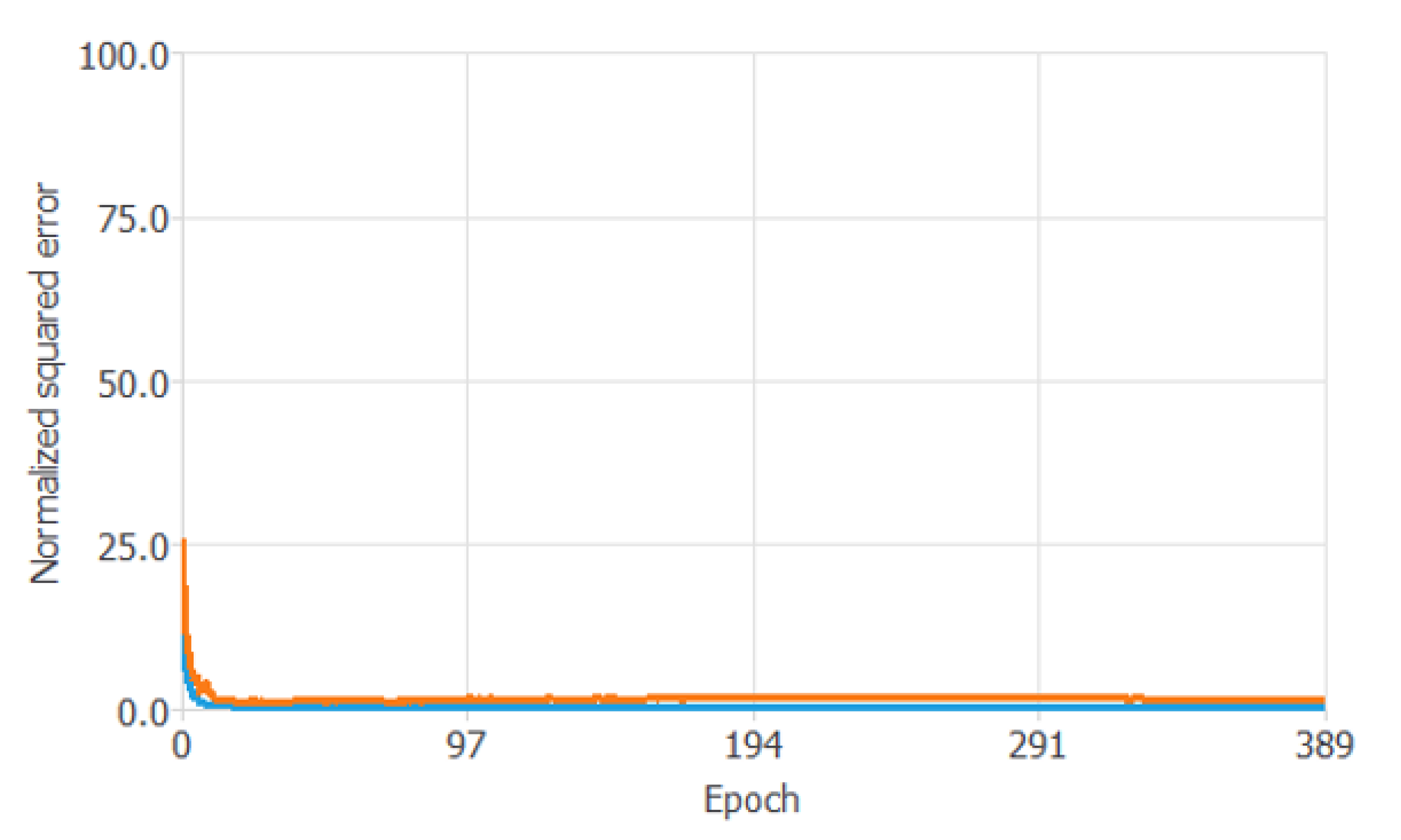
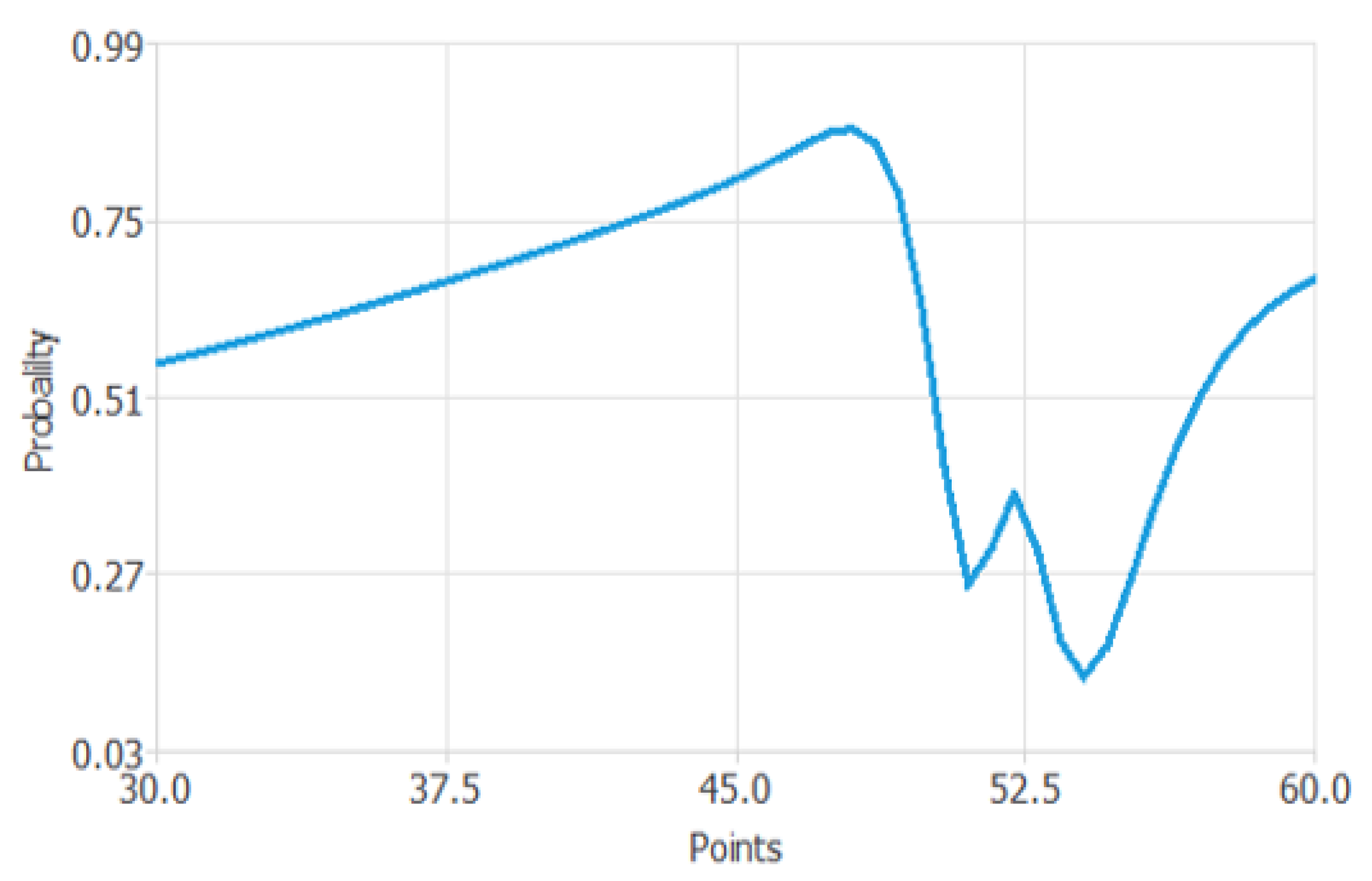
| University | Faculty | Subject |
|---|---|---|
| University Business Academy in Novi Sad | Faculty of Economics and Engineering Management in Novi Sad | Fundamentals of mechanical engineering |
| Technical drawing with descriptive geometry | ||
| Engineer computer drawing | ||
| Mechanics | ||
| Driving dynamics | ||
| Motor vehicles | ||
| Internal combustion engines | ||
| Means of transport and maintenance | ||
| Maintenance of traffic and transport means | ||
| Exploiting, diagnostics, and maintenance of road vehicles | ||
| Exploiting and maintenance of motor vehicles | ||
| The impact of traffic on the environment | ||
| Contemporary aspects of transport vehicles and materials | ||
| Quality management | ||
| Business statistics | ||
| Mathematics | ||
| Basis of informational systems | ||
| Quantitative methods | ||
| Business informational systems | ||
| Theories of traffic flow | ||
| Freight transport technology | ||
| Transport organization | ||
| Capacity of roads | ||
| Traffic research and measurement methods | ||
| University MB in Belgrade | Business and Law Faculty in Belgrade | Business mathematics |
| Accounting | ||
| Revision | ||
| Statistics | ||
| Independent University of Banja Luka | Faculty of Ecology Faculty of Business Economy Faculty of Information Technologies Faculty of Pedagogy | Business statistics |
| Advanced statistics | ||
| Statistics and data processing | ||
| Decision theories | ||
| Econometrics | ||
| Probability and statistics | ||
| Operational research | ||
| Mathematics | ||
| Basics of informational systems | ||
| University “Union—Nikola Tesla” | Faculty of Business and Law | Probability and statistics |
| Faculty of Informational Technologies and Engineering | Operational research | |
| University of Novi Sad | Technical Faculty “Mihajlo Pupin” Zrenjanin | Materials 1 |
| Basics of mechanical design | ||
| Machine design | ||
| Intelligent machining processes | ||
| Engineering materials | ||
| Assembly technology |
| Minimum | Maximum | Mean | Deviation | |
|---|---|---|---|---|
| Start year | 2014 | 2020 | 2019.5 | 0.67 |
| Started course | 2016 | 2022 | 2021.53 | 0.66 |
| Points | 30 | 60 | 44.81 | 8.62 |
| Question | 3 | 3 | 3 | 0 |
| Probability | 0.03 | 0.99 | 0.63 | 0.2 |
| Description | Value | |
|---|---|---|
| Minimum order | Number of minimum hidden perceptrons to be evaluated. | 1 |
| Maximum order | Number of maximum hidden perceptrons to be evaluated. | 10 |
| Step | Number of hidden perceptrons added in each iteration. | 1 |
| Trials number | Number of trials for each neural network. | 3 |
| Tolerance | Tolerance for the selection error in the trainings of the algorithm. | 0.01 |
| Selection loss goal | Goal value for the selection error. | 0 |
| Maximum selection failures | Maximum number of iterations at which the selection error increases. | 5 |
| Maximum iterations number | Maximum number of iterations to perform the algorithm. | 1000 |
| Maximum time | Maximum time for the order selection algorithm. | 3600 |
| Plot training error history | Plot a graph with the training error of each iteration. | TRUE |
| Plot selection error history | Plot a graph with the selection error of each iteration. | TRUE |
| Value | |
|---|---|
| Optimal order | 6 |
| Optimum training error | 0.354425 |
| Optimum selection error | 1.09299 |
| Iterations number | 11 |
| Elapsed time | 00:17 |
| Description | Value | |
|---|---|---|
| Inverse Hessian approximation method | Method used to obtain a suitable training rate. | BFGS |
| Training rate method | Method used to calculate the step for the quasi-Newton training direction. | BrentMethod |
| Loss tolerance | Maximum interval length for the training rate. | 0.001 |
| Minimum parameters increment norm | Norm of the parameters increment vector at which training stops. | 1·10−9 |
| Minimum loss decrease | Minimum loss improvement between two successive epochs. | 1·10−12 |
| Loss goal | Goal value for the loss. | 1·10−12 |
| Gradient norm goal | Goal value for the norm of the objective function gradient. | 0.001 |
| Maximum selection error increases | Maximum number of epochs at which the selection error increases. | 100 |
| Maximum iterations number | Maximum number of epochs to perform the training. | 1000 |
| Maximum time | Maximum training time. | 3600 |
| Reserve parameters norm history | Plot a graph with the parameter norm of each iteration. | FALSE |
| Reserve error history | Plot a graph with the loss of each iteration. | TRUE |
| Reserve selection error history | Plot a graph with the selection error of each iteration. | TRUE |
| Reserve gradient norm history | Plot a graph with the gradient norm of each iteration. | FALSE |
| Value | |
|---|---|
| Final parameters norm | 23.3 |
| Final training error | 0.35 |
| Final selection error | 1.42 |
| Final gradient norm | 0.000982 |
| Epochs number | 389 |
| Elapsed time | 00:01 |
| Stopping criterion | Gradient norm goal |
| Average Grades | |||
|---|---|---|---|
| Period 1 | Period 2 | Period 3 | |
| Mechanical Engineering | 7.9 | 7.6 | 8.4 |
| Traffic Engineering | 8.1 | 7.7 | 8.5 |
| Informatics and Statistics | 8.4 | 7.6 | 8.7 |
| Accounting and Auditing | 8.1 | 7.9 | 8.1 |
| % of Success | |||
|---|---|---|---|
| Period 1 | Period 2 | Period 3 | |
| Mechanical Engineering | 83 | 73 | 89 |
| Traffic Engineering | 85 | 77 | 92 |
| Informatics and Statistics | 85 | 86 | 85 |
| Accounting and Auditing | 82 | 80 | 81 |
Publisher’s Note: MDPI stays neutral with regard to jurisdictional claims in published maps and institutional affiliations. |
© 2022 by the authors. Licensee MDPI, Basel, Switzerland. This article is an open access article distributed under the terms and conditions of the Creative Commons Attribution (CC BY) license (https://creativecommons.org/licenses/by/4.0/).
Share and Cite
Milosevic, D.; Trnavac, D.; Ilic, D.; Vulic, M.; Djurdjev, M.; Radic, M.; Markovic, B.; Tomovic, N.; Ljubojevic, S.; Cakic, A.; et al. A Practical Model of the Application of Information Technology in Various Fields of Online Education during the COVID-19 Pandemic: Mechanical Engineering, Traffic, Informatics and Statistics, Accounting and Auditing. Sustainability 2022, 14, 16164. https://doi.org/10.3390/su142316164
Milosevic D, Trnavac D, Ilic D, Vulic M, Djurdjev M, Radic M, Markovic B, Tomovic N, Ljubojevic S, Cakic A, et al. A Practical Model of the Application of Information Technology in Various Fields of Online Education during the COVID-19 Pandemic: Mechanical Engineering, Traffic, Informatics and Statistics, Accounting and Auditing. Sustainability. 2022; 14(23):16164. https://doi.org/10.3390/su142316164
Chicago/Turabian StyleMilosevic, Dragan, Dragana Trnavac, Dragoljub Ilic, Miroslav Vulic, Mica Djurdjev, Maja Radic, Branka Markovic, Nena Tomovic, Srdjan Ljubojevic, Aleksandar Cakic, and et al. 2022. "A Practical Model of the Application of Information Technology in Various Fields of Online Education during the COVID-19 Pandemic: Mechanical Engineering, Traffic, Informatics and Statistics, Accounting and Auditing" Sustainability 14, no. 23: 16164. https://doi.org/10.3390/su142316164
APA StyleMilosevic, D., Trnavac, D., Ilic, D., Vulic, M., Djurdjev, M., Radic, M., Markovic, B., Tomovic, N., Ljubojevic, S., Cakic, A., Bodolo, I., & Dobric, M. (2022). A Practical Model of the Application of Information Technology in Various Fields of Online Education during the COVID-19 Pandemic: Mechanical Engineering, Traffic, Informatics and Statistics, Accounting and Auditing. Sustainability, 14(23), 16164. https://doi.org/10.3390/su142316164









